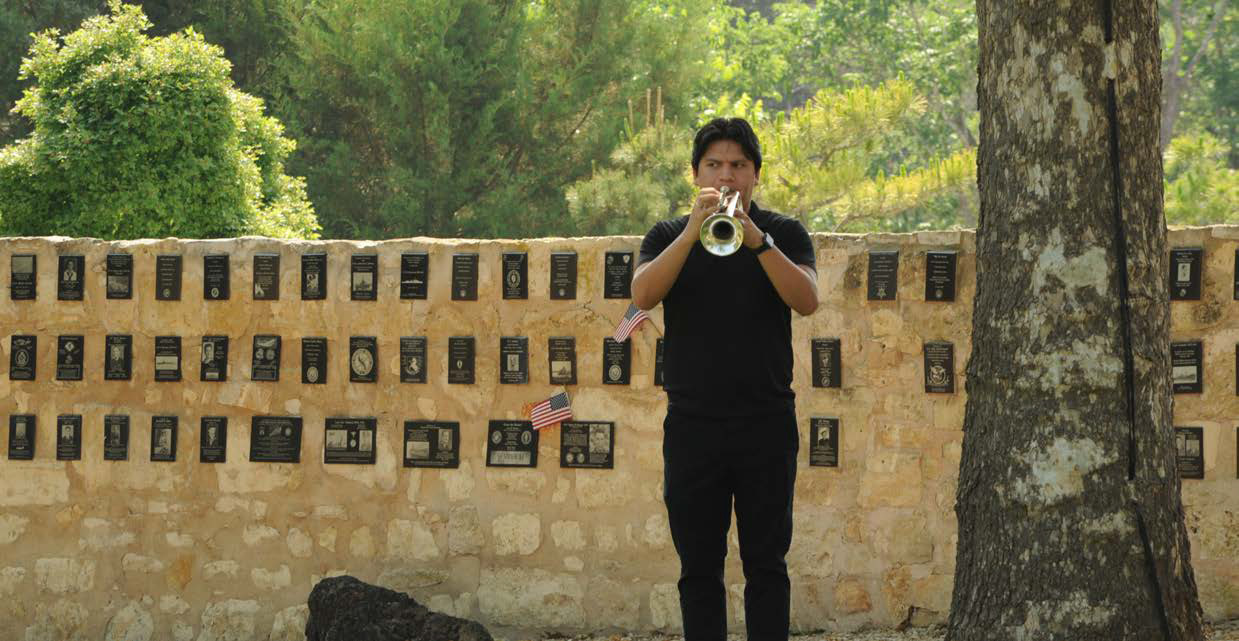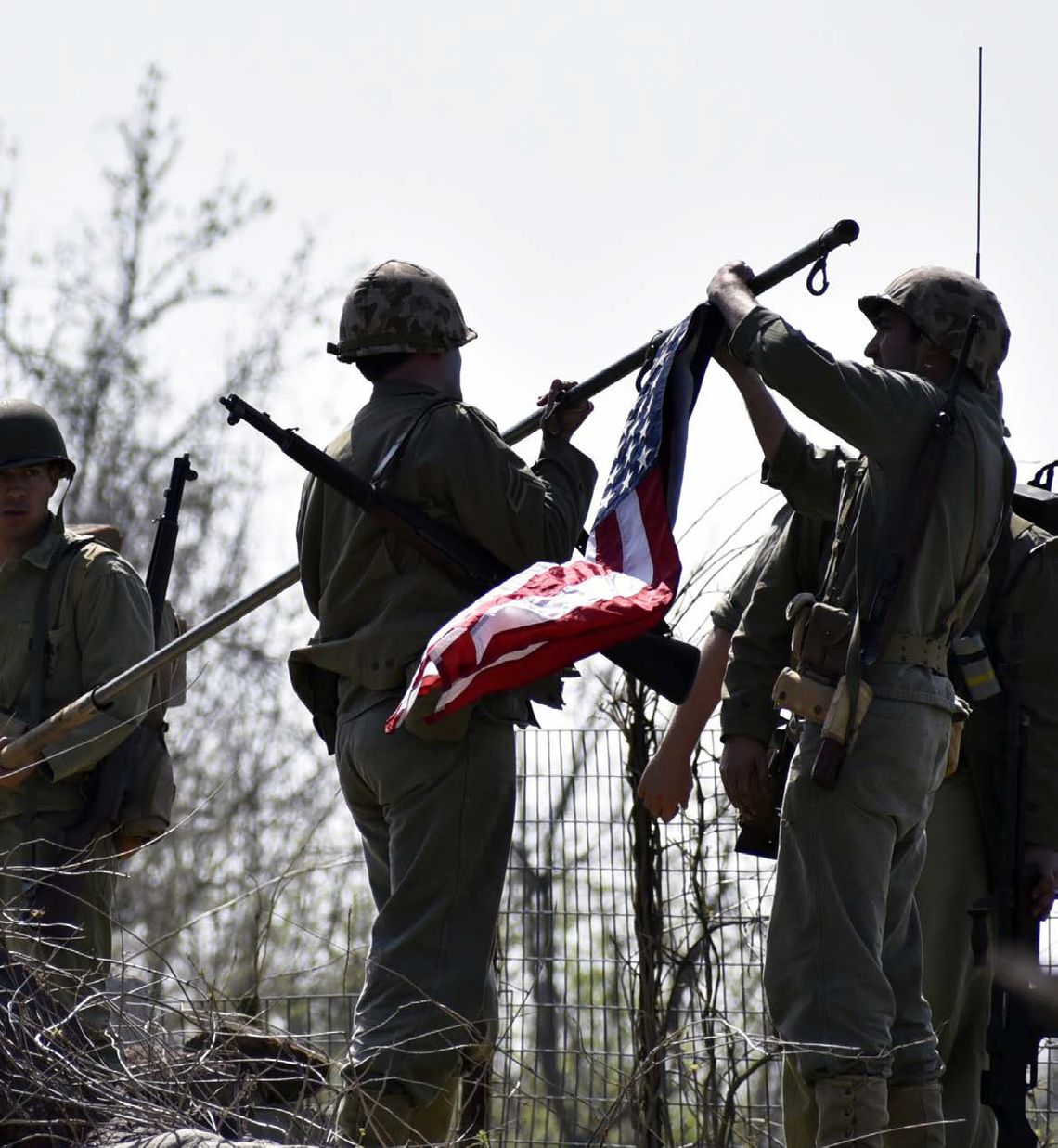The museum, formerly known as the Nimitz Museum, for Fredericksburg’s own, Fleet Admiral Chester W. Nimitz, is located at 340 East Main Street.
Exhibitions honor the more than 100,000 Americans who gave their lives in the war by “truthfully and respectfully telling the story of their struggles, their sacrifices and their triumphs.”
The eight million Americans who served in World War II are honored, as well. It preserves the memories of all who served and never returned home.
The museum’s 33,000-squarefoot exhibit area features 40 media installations, approximately 900 artifacts in 97 climate-controlled cases, 15 macro-artifacts and hundreds of photographs.
An eight-foot bronze statue in Nimitz Platz memorializes Nimitz and greets visitors at the front of the building. The Admiral Nimitz Museum houses the Cailloux Education Center, Admiral Nimitz Grand Ballroom and Mezzanine.
The six-acre museum includes the Admiral Nimitz Museum, George H.W. Bush Gallery, Japanese Garden of Peace, Memorial Courtyard, Plaza of Presidents, Nimitz Education and Research Center and the Pacific Combat Zone.
Exhibits in the George H.W. Bush Gallery convey the shock and destruction of the Japanese attack on Pearl Harbor. An HA-19, one of the five Japanese two-man submarines that took part in the attack, is in the gallery.
The museum teaches the history and lessons learned from the Asiatic-Pacific Theater of Operations during World War II and offers educational platforms that consider current and potential national security issues.
The Memorial Courtyard remembers the soldiers, ships and units in the Pacific Theater.
The archives of the National Museum of the Pacific War hold thousands of manuscripts, official documents, photographs and recorded interviews with Pacific War veterans. The Nimitz Education and Research Center, where the archives are, is open to the public by appointment.
EXHIBITIONS
The PT 309 boat exhibit allows guests onto the deck of a boat tender equipped for a mission.
This exhibit includes video displays and oral histories of PT 309 “Oh Frankie,” the boat on display, and others.
The TBM Avenger exhibit takes museum-goers below deck of an aircraft carrier ready for a mission.
Visitors can test their skills on tabletop games stationed in front of the plane.
They can launch torpedoes at enemy ships, defend a ship from enemy attack by manning an anti-aircraft gun, and land the pilot safely on the deck by waiving him in on his approach.
This exhibit also includes video displays, information panels about flight missions and artifacts.
PACIFIC COMBAT ZONE
Two blocks east of the main museum, at the Pacific Combat Zone, living history reenactments put viewers on the front line. The WWII Pacific Combat Program features 60-minute shows that immerse visitors in battle. They show equipment, weapons and tactics of the U.S. Army and Marines and the Imperial Japanese Army.
The Pacific Combat Zone, one of the museum’s most popular venues, is a unique two-acre indoor and outdoor exhibit.
The live reenactments are staged eight times a year on the weekends and feature history and details on weapons used during the war, as well as a display of the weapons being used.
Guests can spend as long as they would like exploring exhibits in Phase 1.
In March 2017, the museum finished its $8 million renovation to the complex.
Admission for the show is $10 for adults; $5 for students and children; and free for children five and under and WWII veterans. Ear plugs are provided.
Advance tickets are available at the George H.W. Bush Gallery or the Admiral Nimitz Museum. Walk-up tickets are sometimes available at the combat zone prior to the program.
GENERAL INFORMATION
The National Museum of the Pacific War is open Wednesday through Monday from 9 a.m. to 5 p.m., except for Thanksgiving, Christmas Eve and Christmas.
Admission is free for WWII veterans. Tickets for senior citizens 65 and older are $14; adults are $18; military members (active or retired) with an I.D. are $12; children six and over and students who have ID, are $8; children five and under are admitted free of charge.
For more information, call 9978600 or visit the museum online at pacificwarmuseum.org.

The Japanese Garden of Peace and the Memorial Courtyard often host ceremonies honoring military veterans.


Comment
Comments